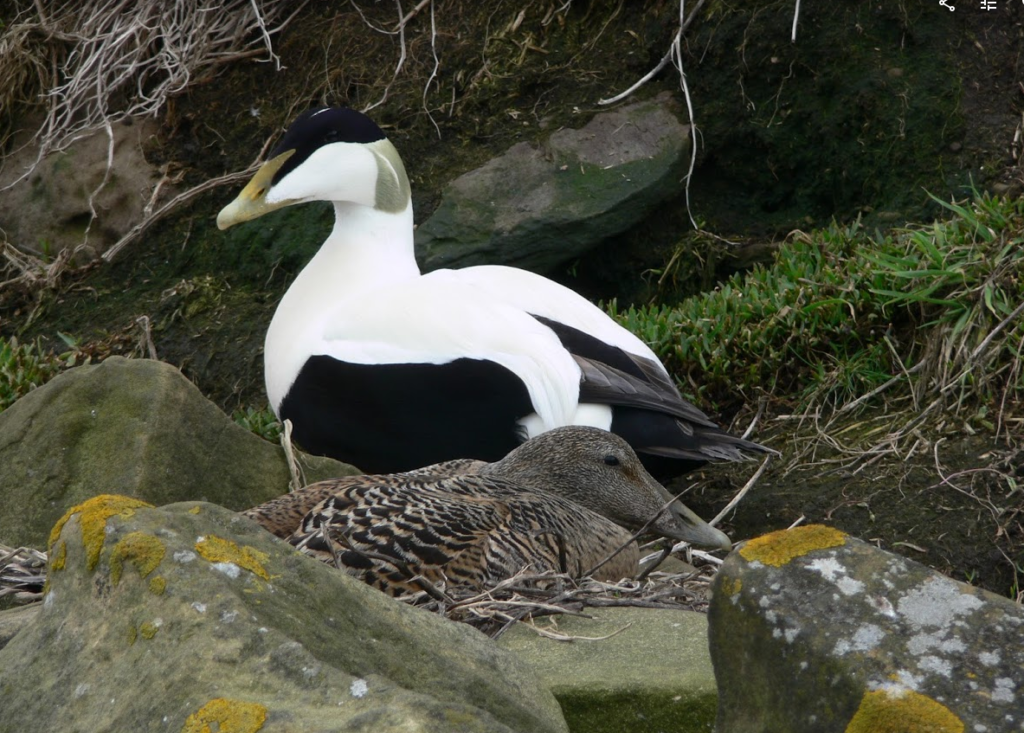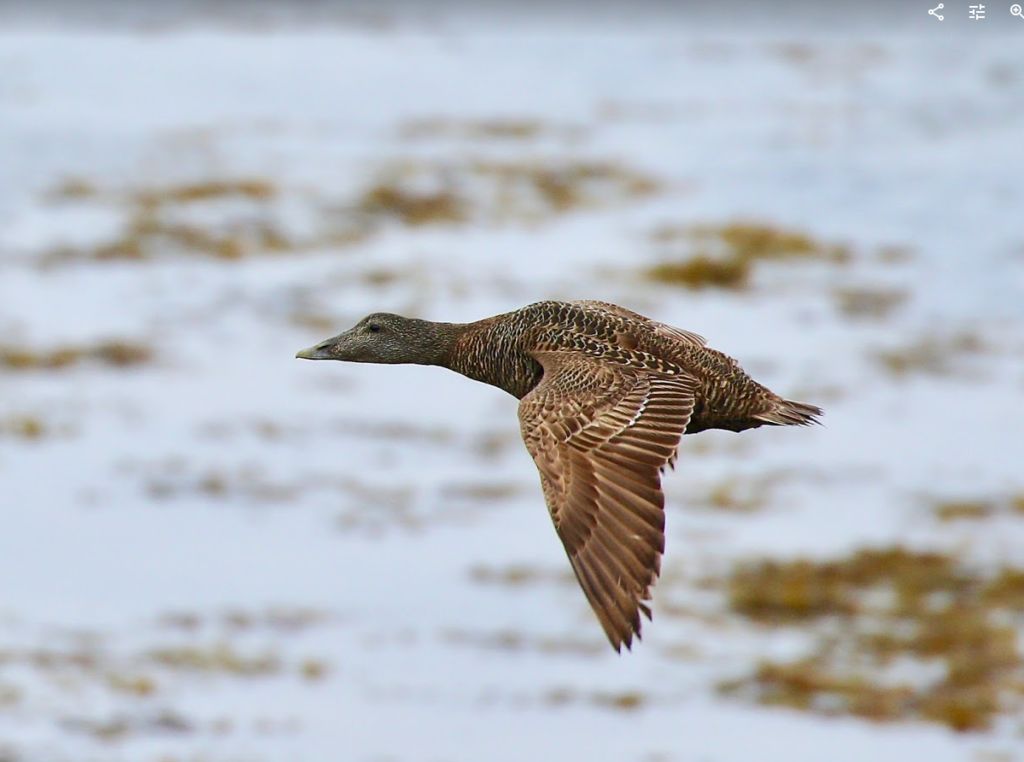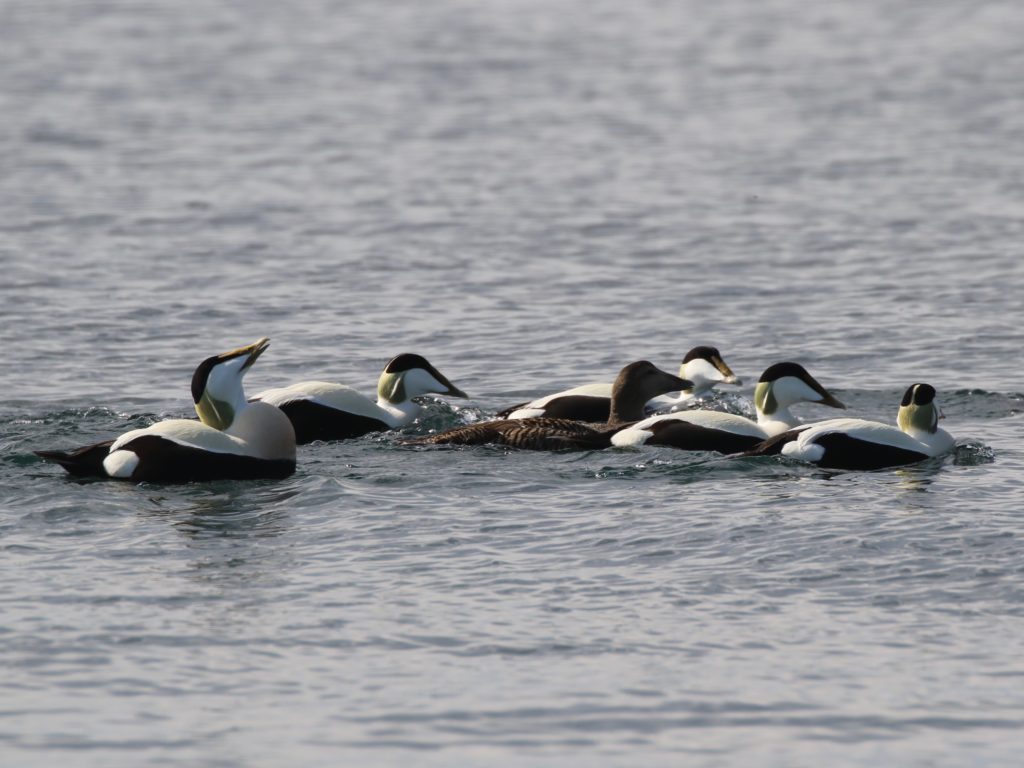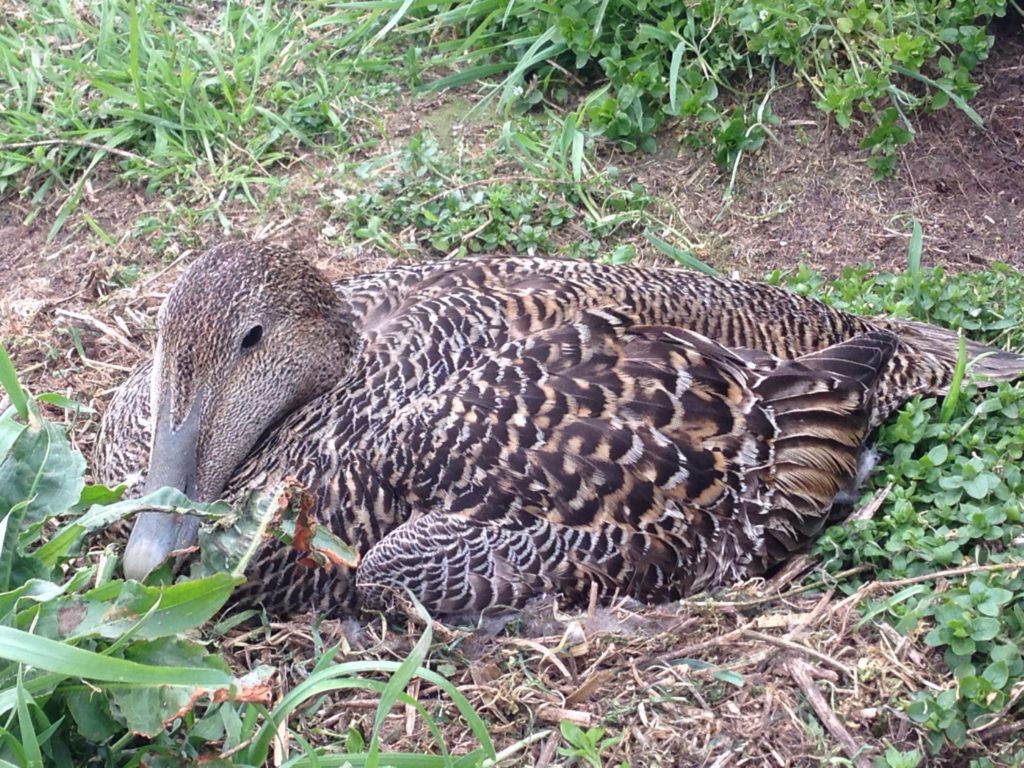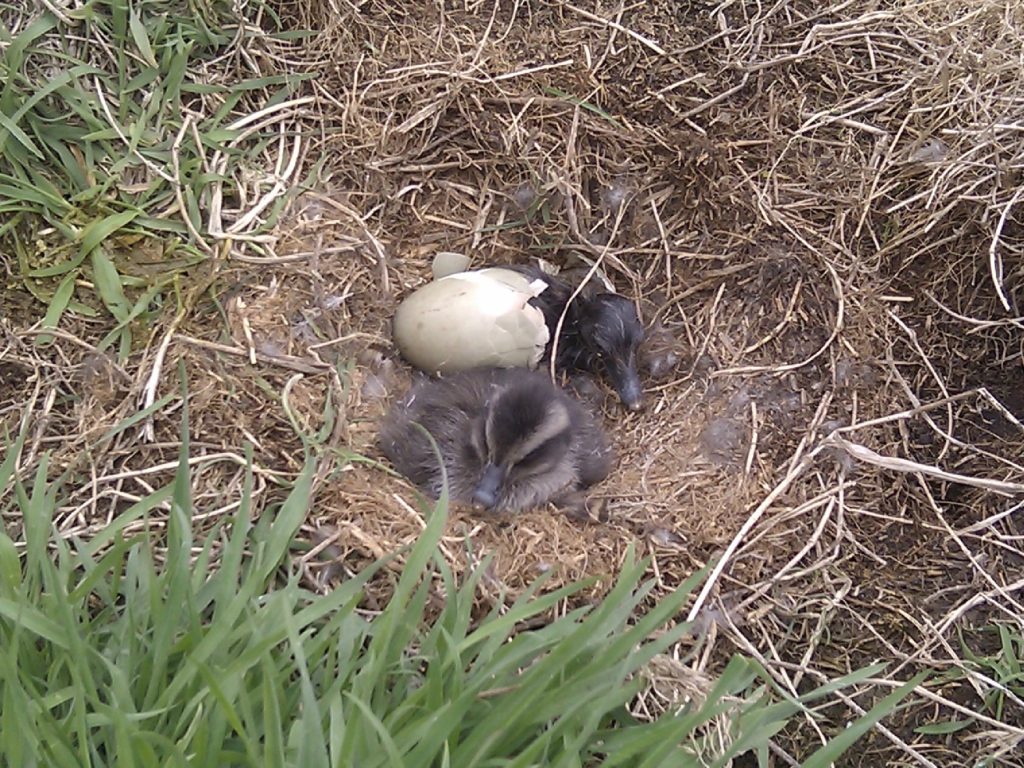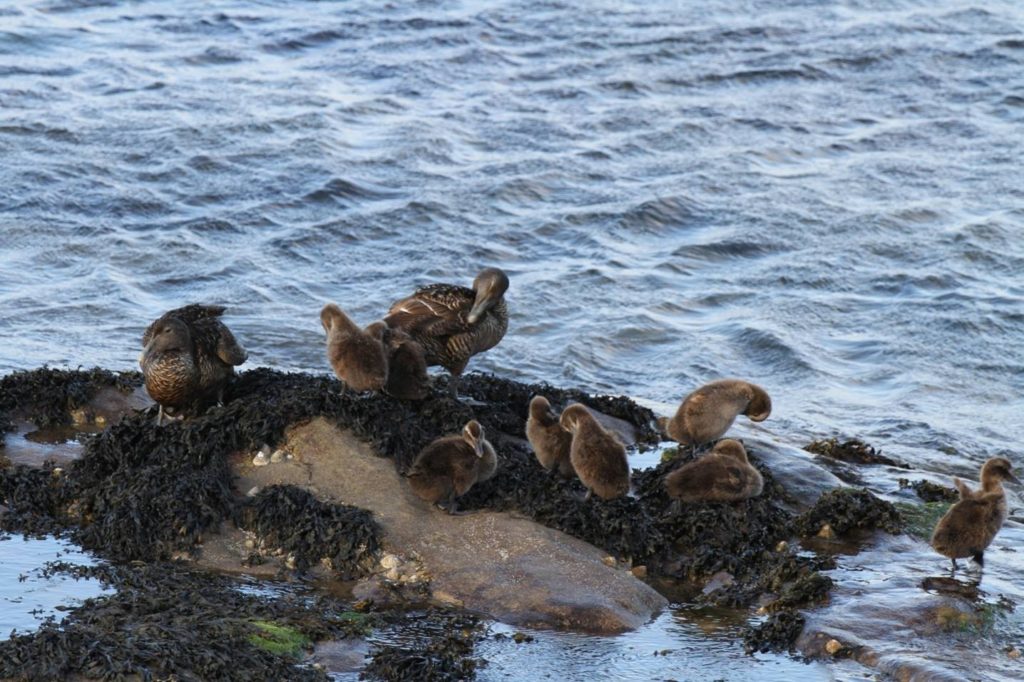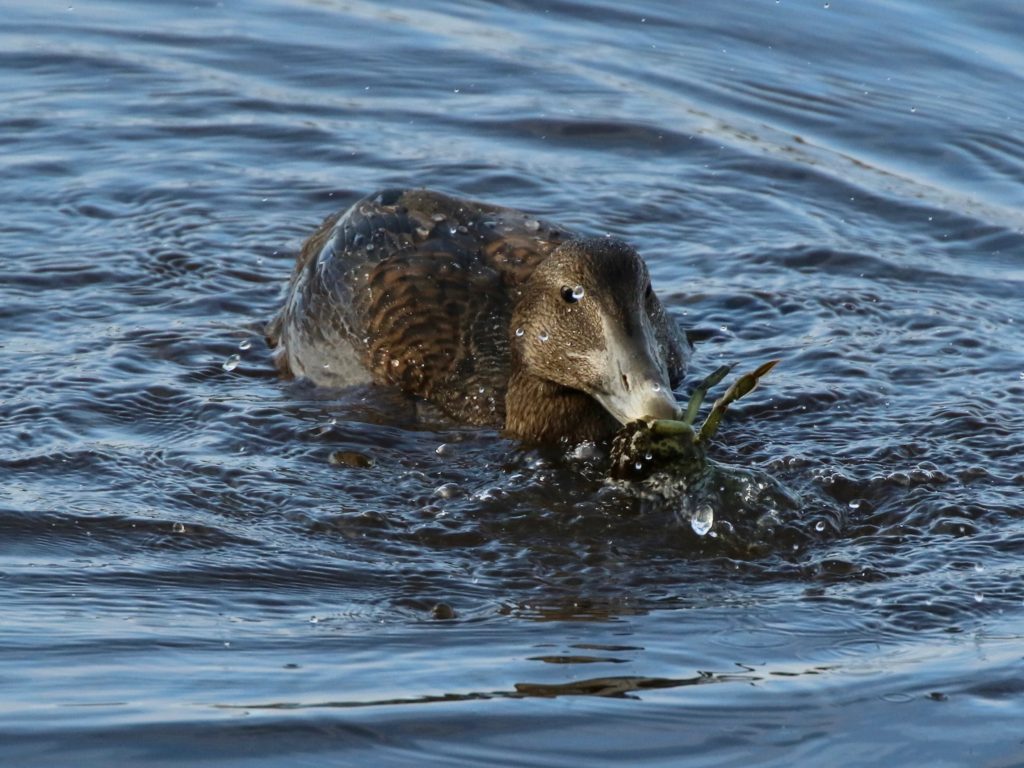All About Eiders
The Northumberland coast has a long association with eiders, thanks to their link with St Cuthbert the 7th Century Bishop of Lindisfarne. Nationally important numbers of eider are found along our waters during both the summer and winter months. This national importance was recognised in May 2019 through the designation of the Berwick to St Mary’s Marine Conservation Zone (MCZ) .
Eider Basics
- Eiders are seaducks. They spend their entire lives on the coast or at sea and are adapted to the harsh conditions found there.
- They are the UK’s largest duck and capable of flying at speeds of up to 50 mph.
- Eider courtship begins in November or December and lasts through till the spring.
- Eggs are laid in clutches of up to 8 eggs during the spring and early summer. Nest building and chick rearing are all left to the female. Nests are made on the ground and lined with down feathers, plucked from the female’s own breast. A month passes before the chicks hatch. The female doesn’t feed while on the nest and may lose 30% of her body weight in this time.
Ducklings take to the water within 48 hours of hatching. They are at their most vulnerable at this time and they group together in creches supervised by mother ducks. Other females (called aunties) join the creches to help warn and protect them against predators such as large gulls and foxes. Estuaries and harbours provide essential feeding and shelter for young eiders at this stage of their life.
Eiders feed on shellfish which they take from the seabed or from rocks. Mussels are a favoured item and are swallowed whole and crushed in the bird’s gizzard. Their large feet and strong muscles allow eiders to dive or swim to a depth of 10 metres. Ducklings begin to learn to feed themselves from the moment they enter the sea.
Eider names
Eider ducks are strongly connected with St Cuthbert, the 7th Century Bishop of Lindisfarne. This is reflected in Northumbrian names for eider which include “Cuthbert duck” and “Cuddy duck”
In the 12th century, the monks of Durham called it “Aves Beati Cutherti” (birds of the blessed Cuthbert)
In the Western Isles “Colk” (gaelic for feather bed)
In Orkney and Shetland “Dunter” (from its bobbing up and down action whilst at sea)
In France – “Eider á Duvet”

